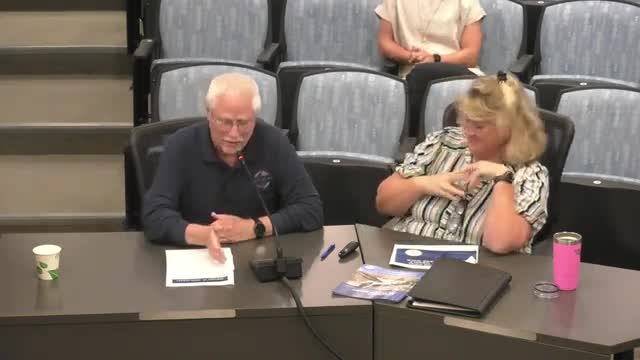City moves to adopt crucial floodplain maps for safety
August 14, 2024 | Longmont, Boulder County, Colorado
This article was created by AI summarizing key points discussed. AI makes mistakes, so for full details and context, please refer to the video of the full meeting. Please report any errors so we can fix them. Report an error »

In a recent meeting, Longmont's floodplain administrator presented crucial updates regarding the adoption of preliminary flood insurance rate maps (FIRMs) that have been in use for the past five years. The maps, which are essential for determining flood insurance requirements and risk management, are set to become official, with Boulder County's maps effective on October 24 and Weld County's on September 1.
The administrator emphasized the importance of these maps in maintaining Longmont's participation in the National Flood Insurance Program (NFIP), which the city has been part of since 1977. This participation allows residents access to flood insurance and federal assistance during disasters, making the adoption of the updated maps critical. Failure to adopt the maps could result in sanctions, including the inability to issue new flood insurance policies and reduced eligibility for federal grants.
The meeting highlighted the significant changes in floodplain designations since the last maps were issued. The updated maps reflect a larger floodplain area, which will require many property owners, particularly those with federally backed mortgages, to obtain flood insurance for the first time. The administrator noted that the transition to the new maps will bring surprises for some residents, as properties previously exempt from insurance requirements may now fall within the designated floodplain.
Additionally, the administrator discussed ongoing efforts to revise floodplain boundaries through Letters of Map Revision (LOMRs), which will be processed after the new maps are officially adopted. This process is expected to take several months, during which residents may experience uncertainty regarding their flood insurance obligations.
Overall, the meeting underscored the city's commitment to flood risk management and the necessity of keeping floodplain maps current to protect residents and ensure compliance with federal regulations.
The administrator emphasized the importance of these maps in maintaining Longmont's participation in the National Flood Insurance Program (NFIP), which the city has been part of since 1977. This participation allows residents access to flood insurance and federal assistance during disasters, making the adoption of the updated maps critical. Failure to adopt the maps could result in sanctions, including the inability to issue new flood insurance policies and reduced eligibility for federal grants.
The meeting highlighted the significant changes in floodplain designations since the last maps were issued. The updated maps reflect a larger floodplain area, which will require many property owners, particularly those with federally backed mortgages, to obtain flood insurance for the first time. The administrator noted that the transition to the new maps will bring surprises for some residents, as properties previously exempt from insurance requirements may now fall within the designated floodplain.
Additionally, the administrator discussed ongoing efforts to revise floodplain boundaries through Letters of Map Revision (LOMRs), which will be processed after the new maps are officially adopted. This process is expected to take several months, during which residents may experience uncertainty regarding their flood insurance obligations.
Overall, the meeting underscored the city's commitment to flood risk management and the necessity of keeping floodplain maps current to protect residents and ensure compliance with federal regulations.
View full meeting
This article is based on a recent meeting—watch the full video and explore the complete transcript for deeper insights into the discussion.
View full meeting
